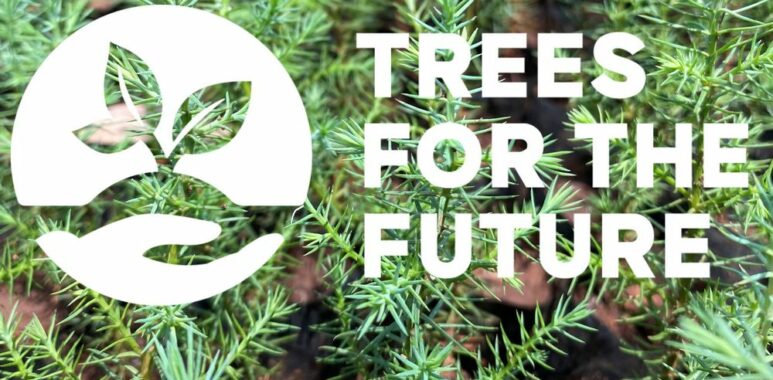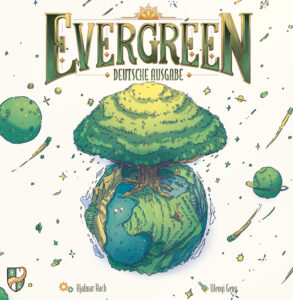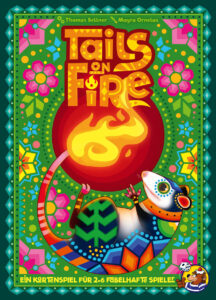
Fish & Katz, Tails on Fire and Evergreen support Trees for the Future
Sustainability is a very important topic – also in the games industry. We at HeidelBÄR Games support the organization Trees for the Future with our games Tails on Fire, Fish & Katz and Evergreen (Horrible Guild). With Trees for the Future, we have found a competent partner in terms of sustainable commitment. For every sold copy of our two new games Tails on Fire and Fish & Katz and Evergreen, a tree will be planted by the organization. In addition, Trees for the Future supports regionally based families who live from agriculture with important knowledge and tools.
Sustainability is rightly a very important social issue that also affects the games industry. For us at HeidelBÄR Games, sustainability is also an important topic, so we decided to work with Trees for the Future on our two new games, Tails on Fire, Fish & Katz and Evergreen.
Trees for the Future was founded – like us – back in 1989 and has since planted more than 278 million trees. Since its inception, Trees for the Future has been active in more than 50 countries, and since 2014, its work has focused on nine selected countries in sub-Saharan Africa. In these countries, the climatic and economic challenges were most urgent and the greatest impact could be achieved.
Tails on Fire is for 2-6 people ages 10 and up and one game lasts about 20 minutes. In the card game by Thomas Sellner you try in nine rounds to play cards that can no longer be outdone to win the fire on display. Particularly exciting is that each round is played with only three hand cards, and you can steal the collected fire of the other people in certain situations. This keeps the fast-paced game exciting until the end.
 Fish & Katz is for 2-6 people aged 6 and up. One game takes about 20 minutes. The family game by Benjamin Leung includes knitted cat paws, with which you try to snatch the most valuable fish. You only get the fish if no one else has put the paw on the fish as well. So you have to not only look which fish you want to collect, but also try to estimate the actions of the other people.
Fish & Katz is for 2-6 people aged 6 and up. One game takes about 20 minutes. The family game by Benjamin Leung includes knitted cat paws, with which you try to snatch the most valuable fish. You only get the fish if no one else has put the paw on the fish as well. So you have to not only look which fish you want to collect, but also try to estimate the actions of the other people.
 Evergreen is for 1-4 people aged 8 and up and has a game duration of 45 to 60 minutes. In the strategy game by Hjalmar Hach, each person plants seedlings on their own planet and tries to grow them into large trees. You must also take into account the position of the sun and the fertility of each biome.
Evergreen is for 1-4 people aged 8 and up and has a game duration of 45 to 60 minutes. In the strategy game by Hjalmar Hach, each person plants seedlings on their own planet and tries to grow them into large trees. You must also take into account the position of the sun and the fertility of each biome.
What does Trees for the Future do?
The work of Trees for the Future is very diverse. On the one hand, the focus is on planting trees, or more precisely, forest gardens. These restores degraded land (land that is less or no longer usable agriculturally and ecologically due to biological, chemical or physical changes), sequesters carbon and improves biodiversity.
The forest gardens are planted as part of a four-year training program. During this training, farmers learn how to plant the trees, so they can protect the land, add important nutrients to the soil, store water, and eliminate the use of pesticides and fertilizers. In addition, forest gardens also provide a source of food for farmers and their families. With the possibility of selling the yields throughout the year, the gardens also represent an improvement in the financial situation of the farmers and possibly a way out of poverty. Forest gardens average 1 hectare in size, contain 2500 trees, and offset nearly 144 tons of carbon dioxide over 20 years.
Once the farmers have completed the training, they can pass on the knowledge they have learned. Neighboring farmers can be trained in an abbreviated version of the forest garden program.
However, Trees for the Future also works with local organizations and communities. These often already do good work on the ground, but can benefit from training and thus improve their work.
For example, Trees for the Future works closely with Futures Agribusiness (FAGRIB) in Chad and Cameroon, Gambia Rising in Gambia, or The Great Green Wall in Senegal and Mali. In 2019, we partnered with Kenya Scout Association (KSA), whose goal is to restore 10% of Kenya’s tree cover in schools as part of Kenya Vision 2030.
For more info on Trees for the Future, visit: https://trees.org.


